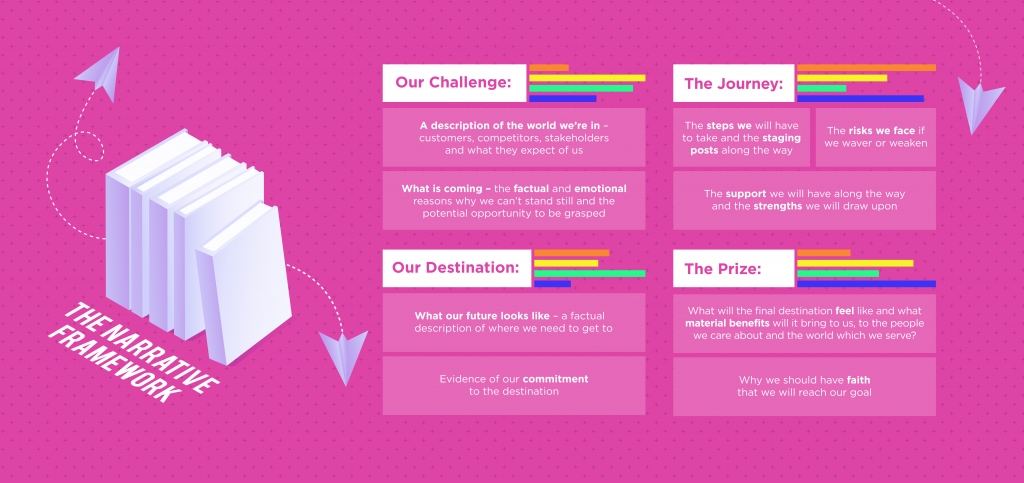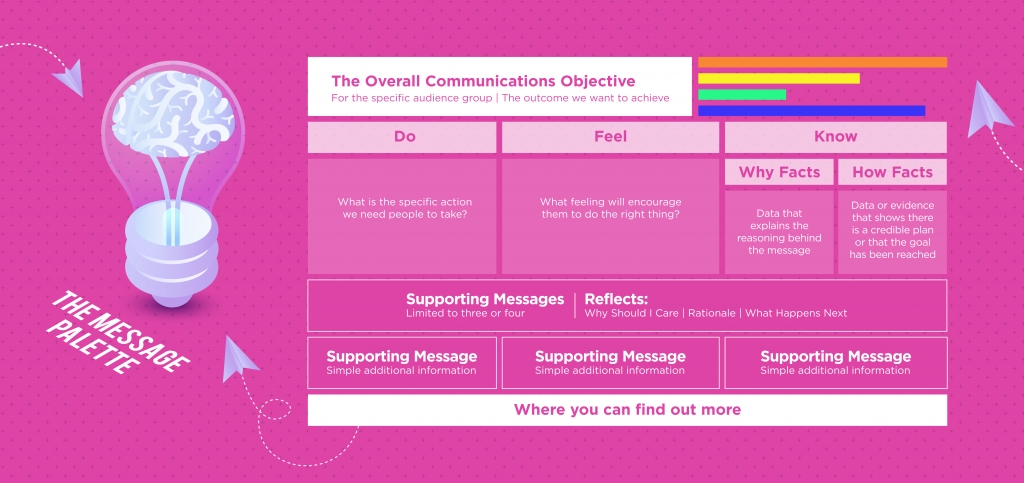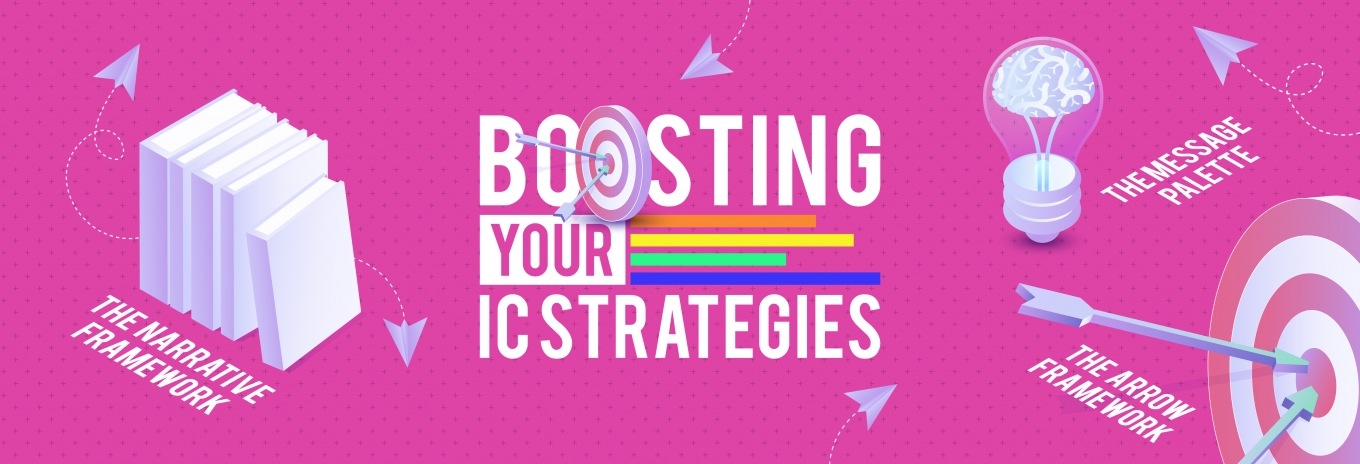We all understand the value of a solid and well-considered strategy.
We know the benefits of research and data.
And we get the need for clarity around what needs to be achieved.
But sometimes it can be hard to know where to start when it comes to planning for a change programme, an upcoming campaign or a new project, particularly at times like these when brains feel overburdened and workloads are even more weighty than usual.
This is where frameworks can help.
And there are three super useful structures that we employ at Alive.
The ARROW framework, the narrative framework and the message palette are all described in the brilliant book, Successful Employee Communications, written by Sue Dewhurst and Liam Fitzpatrick. And this is how they work…
The ARROW framework
The ARROW framework offers a series of questions to guide you and your stakeholders along a conversation route to explore the problem to be solved.
Aim. It begins by guiding you to ask about the destination to be reached, in business terms. What should be different, and how does this translate into behaviours and targets?
What do you need to be different? What business targets should be achieved?
Reality. Next, it prompts you to explore the current state. What is happening now, and how is this problematic? What are the current behaviours, and what’s driving them? How do we know – is research needed?
What do people know at this point? Where do we stand against targets?
Roadblocks. The framework then examines the journey between the current state and the destination. What might stand in the way? Have changes like this been made before? What happened? Are there lessons to be learned?
What could stop the project being successful? What’s the worst thing that could happen?
Opportunities. This section invites you to explore where time is best invested. Of everything that needs to be achieved, what matters most of all?
What’s the one thing that matters most over the next six months? What’s the easiest step we can help people take first?
Who and when. Finally, it prompts you to ask who is affected or needs to make changes; when targets should be achieved, or changes need to be made.
Who is directly affected by this? When does this project need to be completed?
The book offers plenty more questions to explore the problems and the challenges being faced. They don’t necessarily need to be asked in this order. They are simply prompts to make sure each area is covered.
The narrative framework
A narrative is simply a great story, told well and truthfully, about your organisation. It’s the wider context into which your messages fit, it helps people to understand what you stand for, where you’re heading and how you’ll get there. Narratives need to make sense about what is happening, reflect what people believe and be true. The narrative framework is a structured way to lay out the stages of your story and the key features to be included.
It explores the situation, the destination to be reached, the journey to get there and a prize at the end that is recognisable and compelling:
- Our challenge: The current and future environment, and what stakeholders such as customers or regulators expect now and tomorrow. It can include a significant danger or an opportunity to be grasped.
- Our destination: The end state to which the organisation is headed and a sense of the commitment of leaders or decision-makers to that goal.
- The journey: The steps and milestones towards the destination. It should refer to the resources (material and emotional) that will be needed and where they will come from.
- The prize: A statement of what reaching the destination will bring.

The message palette
So, you’ve run through your ARROW framework to understand what people think, and your narrative framework helps provide a platform upon which to explain how things are happening. You now need to focus on the central idea that you need to get over in order to get results. And this is where your message palette fits in.
Typically, you will want to spell out:
The overall communications objective you have set yourself, possibly broken down according to what you want people to:
Do – the actions you need taken;
Feel or believe – the emotional impetus that will motivate people;
Know – the facts and logical reasoning;
- A simple, memorable statement of the idea you want to get over;
- Why the audience should care;
- A maximum of three or four supporting ideas;
- Proof points or ‘killer facts’ that support the ‘why’ and the ‘how’ of your message.

Bringing it all together
When we’re presented with a new project, these three frameworks form part of our go-to toolkit that helps us to set the scene, understand the story, dissect the challenges and help to define the necessary outcomes. They form a logical process that can bring a stack of information together, define the questions that need to be asked and find a way forward. They bring clarity to our thinking and a structure to the work, the timescales and the tactics which follow.
And they can help you too.
















